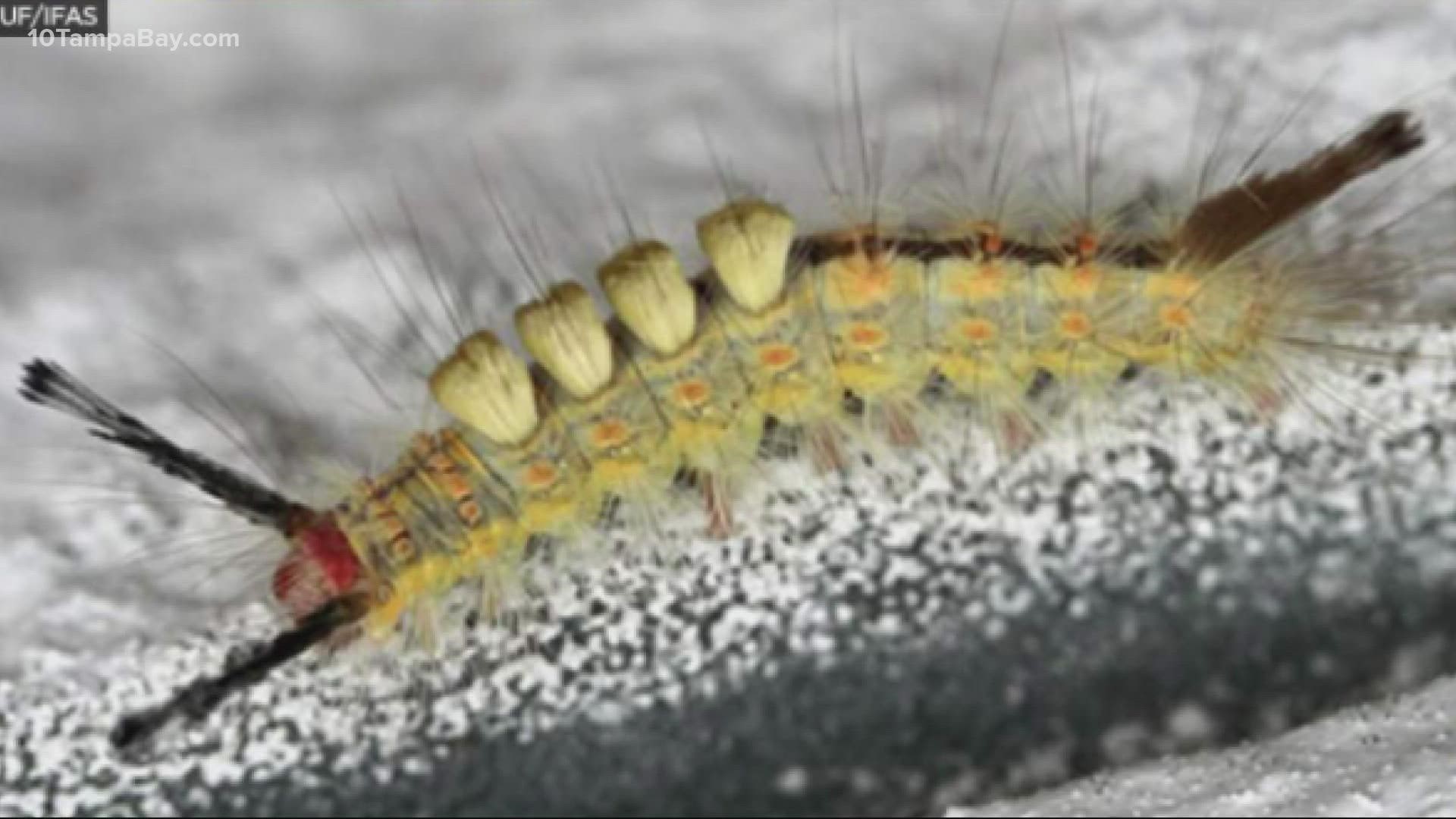FLORIDA, USA — Florida is full of critters from scaly to furry to feathery and everything in between.
And not all of them are friendly. One, in particular, is prompting a warning from scientists and health departments — the tussock moth caterpillar.
It may look soft and fun to pet, but it most certainly isn't. In fact, it can leave you with venomous prickly hairs and a stinging rash.
Why is the warning coming now? It's because now — mid-April — is the time the caterpillars are reaching maturity and are wandering around in search of the perfect place to spin their cocoons, according to scientists with the University of Florida.
And sometimes the caterpillars become so numerous they cause a problem when they travel to find their cocoon spot, scientists say.
Why is this an issue? Well, it's down to the hairy details, literally. The Florida Department of Health says direct contact with the caterpillar, its hairs or its cocoon can cause "an allergic reaction that can lead to the development of an itchy rash."
In addition to that, the tussock moth caterpillar's hairs are barbed, meaning they can stick to the skin and be hard to remove.
In the past, the abundance of the caterpillars and their cocoons on playground equipment at schools and child care facilities have led to outbreaks of rash illness. That's not necessarily happening now, but at least one school district in Florida is warning parents to be on the lookout for the "pesky" caterpillars.
If you do come in contact with the caterpillars, here's what the health department and poison control says you should do:
- Remove the caterpillar from the skin without using bare hands.
- Gently put any kind of tape over the exposed area with the sticky side facing the exposed skin.
- Pull up the tape, removing any hairs or spines.
- Repeat with fresh pieces of tape as often as needed to treat the exposed skin.
- Wash the area gently with soap and water.
- Apply ice pack to reduce stinging sensation and apply paste of baking soda and water to reduce itchiness.
- If the rash does not go away, gets worse, or gets badly blistered, consider consulting with a healthcare provider for futher evaluation and recommendations.

